If you live on the West coast, here's an evergreen shrub you might consider. It comes in a variety of shapes and colors, and grows to heights/widths from 15 inches to 30 inches. The shrub I am talking about is the Hebe plant. While native to New Zealand, they will grow quite well just about anywhere on the central to northern parts fo the West coast. My experience with them is the Oregon coast.
They are perennial.
They like full sun to partial shade.
Like most plants, they prefer well drained soil. Raised beds are probably best. Like almost all plants, they will grow much better if organic material is added to the soil
Soil pH has a wide range, though neutral is likely best.
Some produce little flowers (white, red, purple) in the summer and fall.
Cold wise, they are good for winters down to about 15 degrees. The ones with smaller leaves tend to withstand cold better.
They will respond well to a natural fertilizer in the Spring, Work the fertilizer into the soil a bit with a small tool. Working the soil slightly is especially good in rainy areas, since the soil surface tends to harden a bit after all the winter rains.
Want some planting tips? I have an extensive article on preparing the soil and planting.
Following the suggestions described in that article will virtually guarantee your success in growing Hebe plants
or almost anything else. From my Home Page, the link is titled "Easy Gardening and Planting". Just click the Back
button at the top of this page to get to the Home Page.
Don't forget to water your new plants frequently! Twice a week should be fine. This helps
new plants get over transplant shock more easily. A great percentage of planting failures is due to insufficient water
right after planting! Once established, I find that watering thoroughly about once a month during the dry summer
should be fine. "Hot spells" (such as they are on the Pacific Coast) may require a bit more water.
Some Varietals |
|
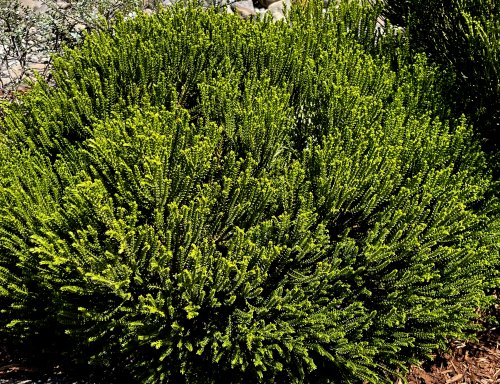 |
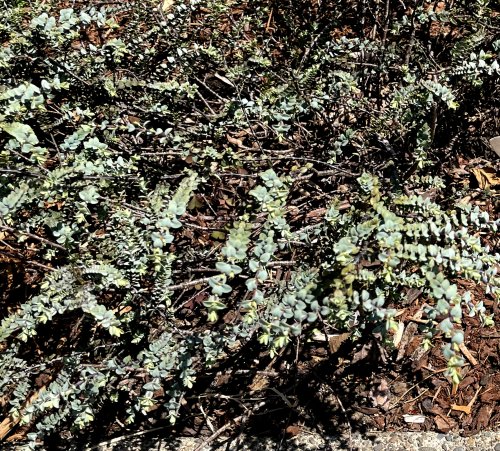 |
Hebe McKeanii |
Hebe Silver Beads |
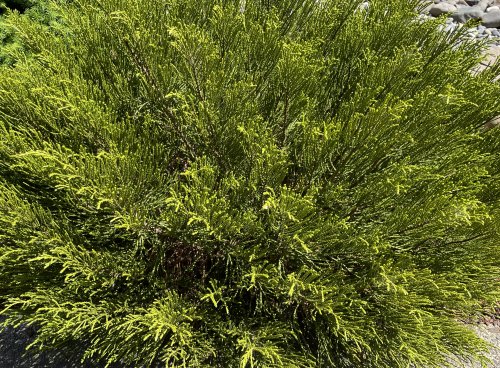 |
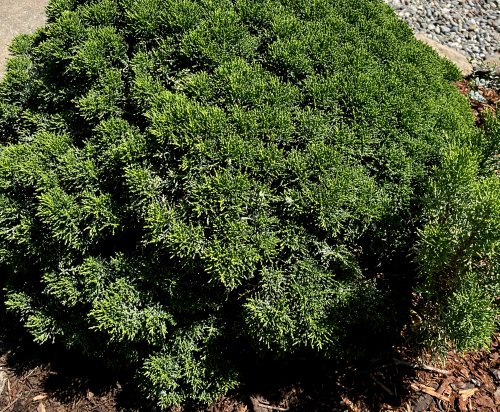 |
Hebe Golden Caroshe |
Hebe Boughten Dome |
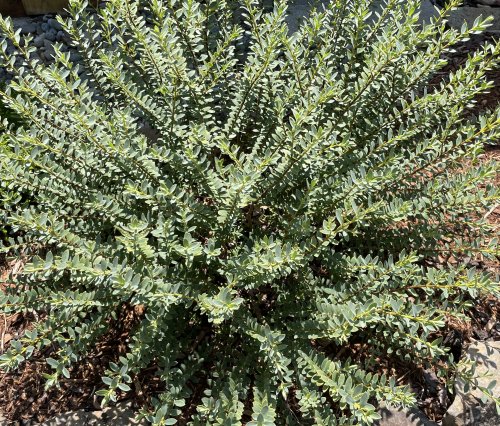 |
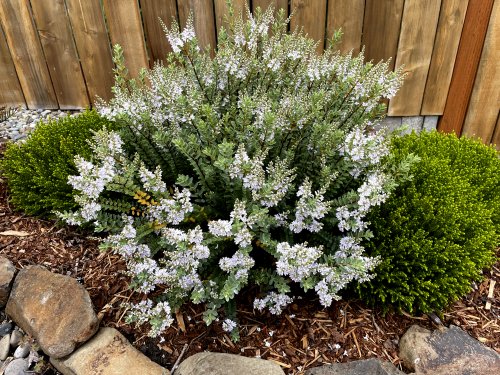 |
Hebe Western Hills |
Hebe Western Hills with Flowers Around the end of June, (about 1 month after taking the picture on the left), all the Western Hills bushes produced some delightful white flowers! |
 |
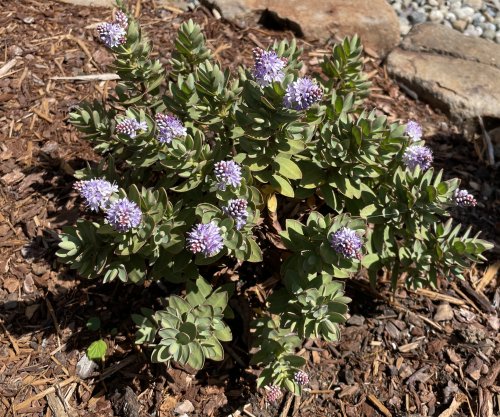 |
Hebe Red Edge |
Hebe Red Edge with Flowers Also, around the end of June, (about 1 month after taking the picture on the left), a couple of the Red Edge bushes produced some delightful violet flowers! |
 |
 |
Champion Hebe |
Hebe Dwarf Purple Leaf |
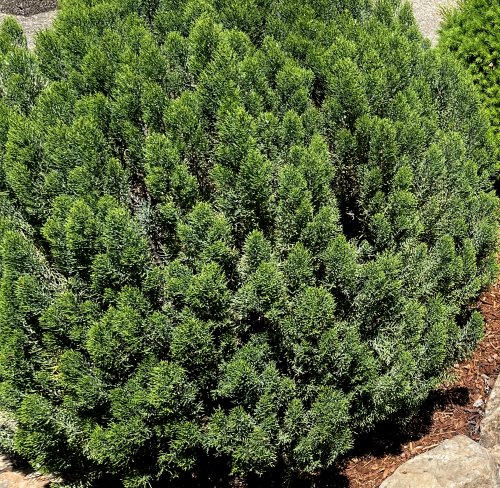 |
|
Hebe Hinerua Scrophulara |
|
My own Hebe Plantings
Shown in these next images are my hebe plantings. This leftmost shrub is a "Boughton Dome" The one just across a stepping stone (a "Golden Caroshe") is partially hidden by the taller evergreen next to it. The taller evergreen is a Dwarf Alberta Spruce (unrelated to hebe plants) To its right is a hebe "Silver Beads" Continuing to the right is another "Golden Caroshe" Going up and to the right (just below another "Silver Beads") is a "Boughton Dome" Finally, at the far back, is a "Hinerua Scrophulara" |
|
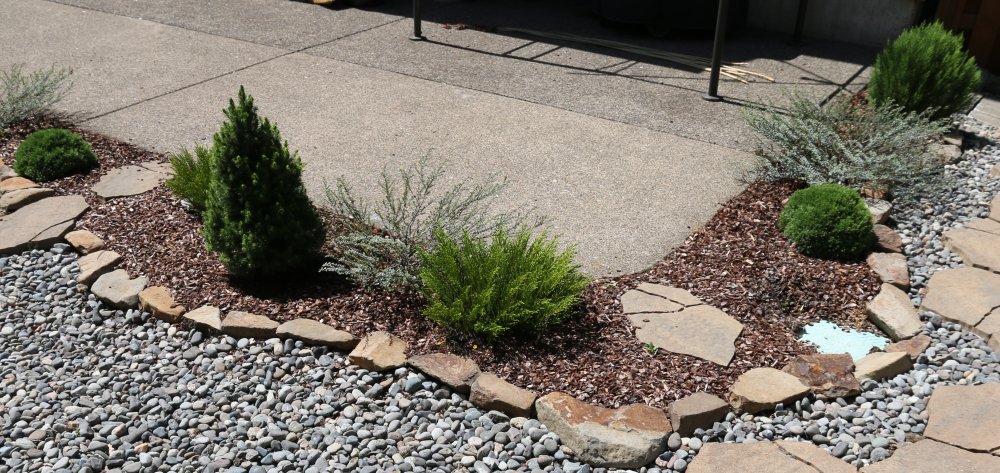 |
|
Picture taken 7/2021: Here are the Hebe plants (and the one Dwarf Alberta Spruce) after 2 years of growth. Note that the "Silver Beads" produces tiny purple flowers in early summer. Also, the "Golden caroshe" and the "Hinera Scrophulara" may produce little white flowers from time to time. |
|
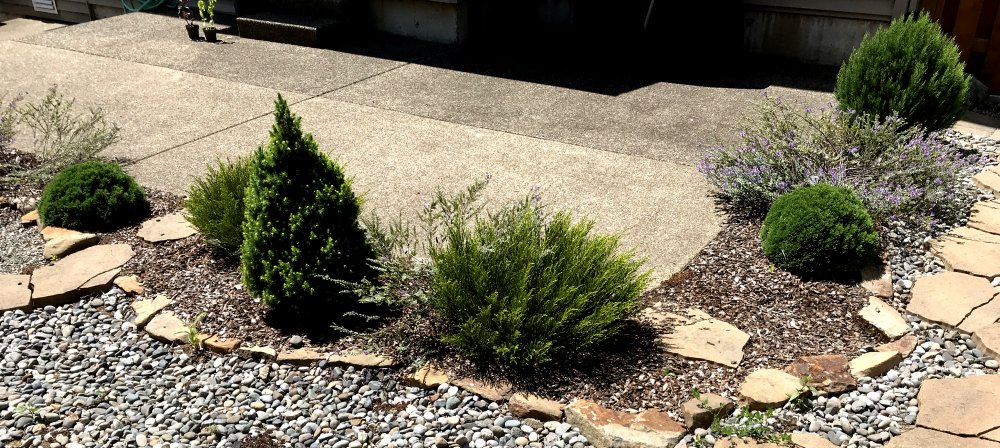 |
|
Picture taken 5/2023: And here are the same plants after four years of growth. Note that the "Golden Caroshe" in the foreground and the "Hinerua Scrophulara" in the back are the fast growers. |
|
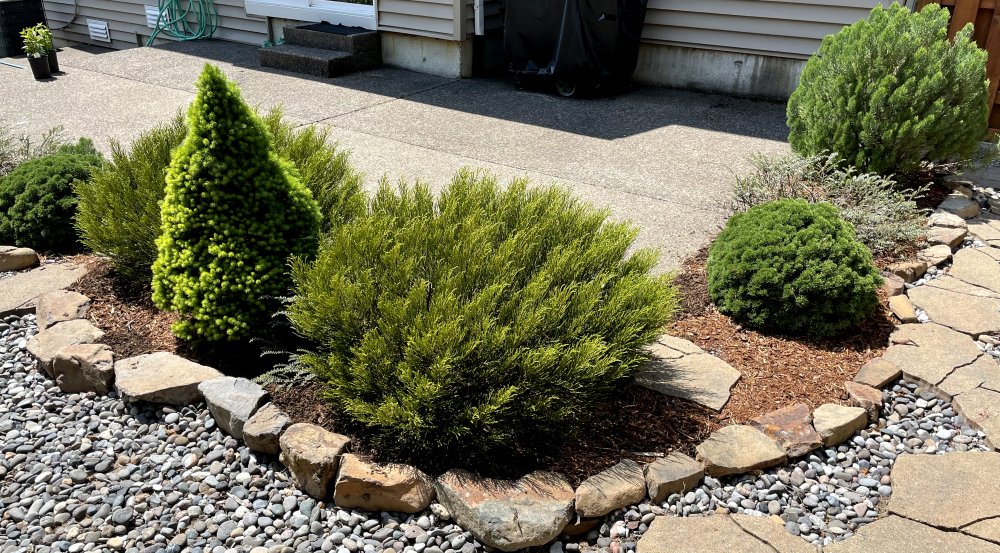 |
|
Picture taken 8/2020: Here is a shot of the back side of the patio in 2020 (the same year as the first photo in "My Own Hebe Plantings" above.) |
|
 |
|
Picture taken 5/2023: And here is a shot of the back side of the patio three years later (same as the third picture above). |
|
 |
|
Picture taken 8/2024: And here is a shot four years later. These hebe plants are becoming quite substantial, and are beginning to lend a downright cozy border for the patio. |
|
 |
|
And here are some different hebes, planted in the corner of the back yard in 2022, a year before this picture was taken. The center evergreen is another Dwarf Alberta Spruce (not a Hebe plant) The plant at the far left is a "Hebe Western Hills". There's another in the middle of the bed on the right. The 2 plants next to it are "Hebe McKeanii". Another is on the other bed, just to the left of the Western Hills The two smaller plants are "Hebe Red Edge". These were actually just planted this year (2023). The top of Cape Lookout mountain is just peeking over the fence toward the right. I planted it 1 million years ago. . . |
|
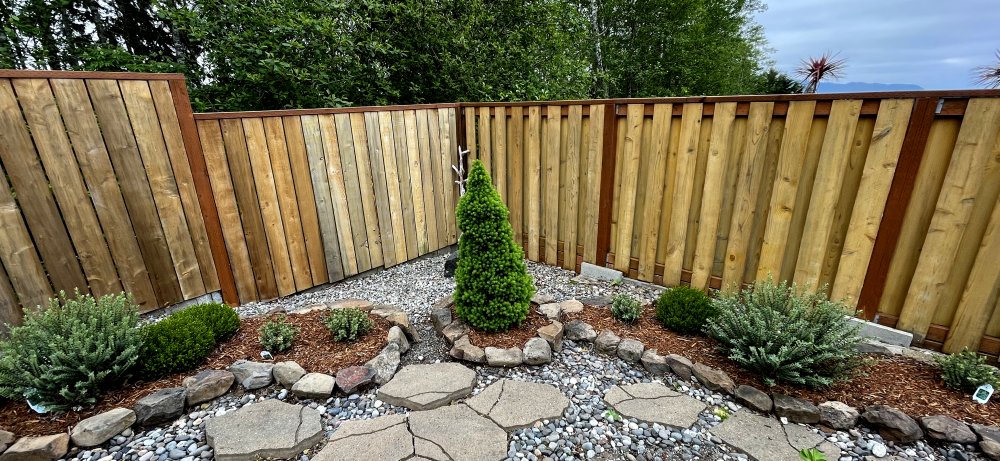 |
|
And yes, here's proof that they can take the cold! This was a late Spring
snowfall that ocurred in April this year. I am standing on the house porch, on the other side of the grouping of hebes
that you see in the three pictures above, showing 1, 2, and 4 years of growth. You can see the Dwarf Alberta
Spruce sticking up, to the left of the picture's center. All the other hebes that you see in the three pictures above
are squashed under multiple mounds of snow that are 7 inches thick! |
|
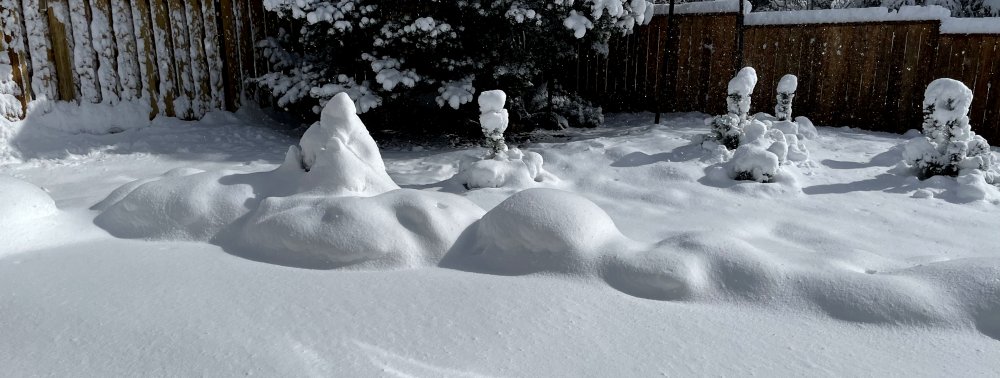 |
Copyright © 2023 J.A.